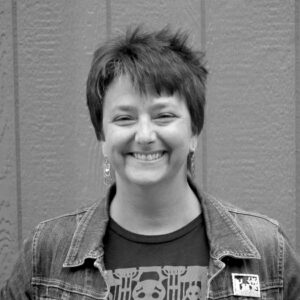Not One Generation Removed, Disability Advocates Fear Return to a Dark Era
Three families share what it took to win the right for special ed students to learn with nondisabled kids — and what’s at risk under Trump & RFK Jr.
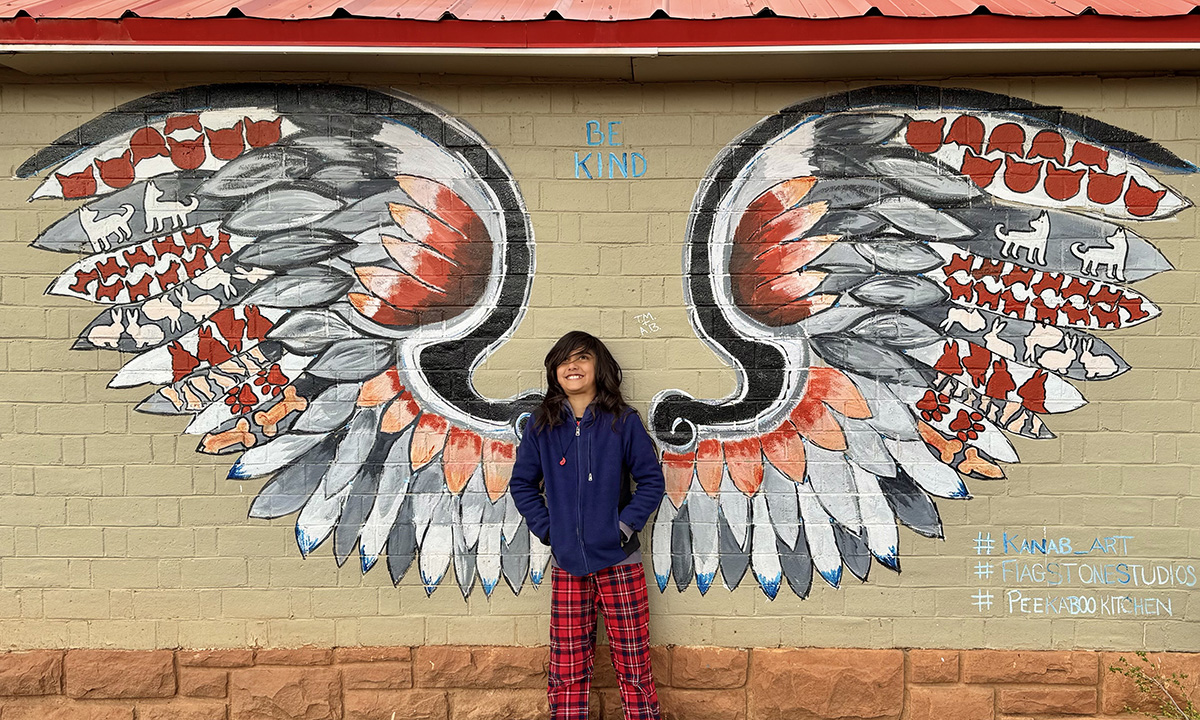
Get stories like this delivered straight to your inbox. Sign up for The 74 Newsletter
A generation ago, people with disabilities were rarely in the room when their welfare was under discussion. Decisions about their care and education were made almost entirely by non-disabled people, who typically addressed them not as individuals who aspired to an education, desirable work or independent living, but as people whose bodies and intellects were broken.
This framework is now known as the medical model of disability — a phrase that conjures images of people institutionalized in childhood, their humanity and potential literally locked away from public view.
In the half-century since the passage of laws ensuring them the right to education, housing, jobs and other public benefits, people with disabilities have made great headway on closing the door to that draconian past and replacing it with what’s called a social model of disability.
The new framework holds that societal institutions — including schools, housing, transportation and public buildings — should remove barriers to their participation. In contrast to the past, the people requiring services should decide how they want to live their lives. Public funds should prioritize access.
Now present when decisions are made, disabled adults — many under the banner of the Disability Justice Movement — have insisted that students’ medical and special education services enable them to learn in regular classrooms where, like their general education peers, they can work toward the future of their choosing.
There are moral and social reasons for integrating students with and without disabilities, but there is also evidence that disabled children are much more likely to be offered appropriate academic challenges in general education classes — and are more likely to see themselves as capable of keeping up with their peers, graduating from college and enjoying a meaningful career.
Yet in recent weeks, disability advocates have reeled as President Donald Trump and Secretary of Health and Human Services Robert F. Kennedy Jr. have issued edicts that they fear mean a quick return to the medical model — and its inherent presumption that some children are incapable of learning. The new administration is systematically cutting agencies and programs that foster self-determination and ensure that students with disabilities are well served.
To outsiders, the discussion can sound bafflingly abstract. Far from being a philosophical debate, however, the frameworks can dictate radically different life trajectories. What follows are portraits of three members of the disability community whose stories illustrate the promise and the peril.
Alison and Ethan Chandra
When Alison Chandra’s family packed for their spring break trip to northern Arizona this year, they hit a milestone of sorts. Her son Ethan was born with multiple critical heart defects and other congenital abnormalities that have required numerous surgeries and frequent emergency room visits. For years, the Chandras kept a hospital “go bag” at the ready.
This year they emptied it and refilled it with supplies for camping and sandboarding, a sport that’s exactly what it sounds like. Nothing — not a surprise April snowfall or a windstorm — kept Ethan, now 10, from flying down the dunes, arms outstretched.
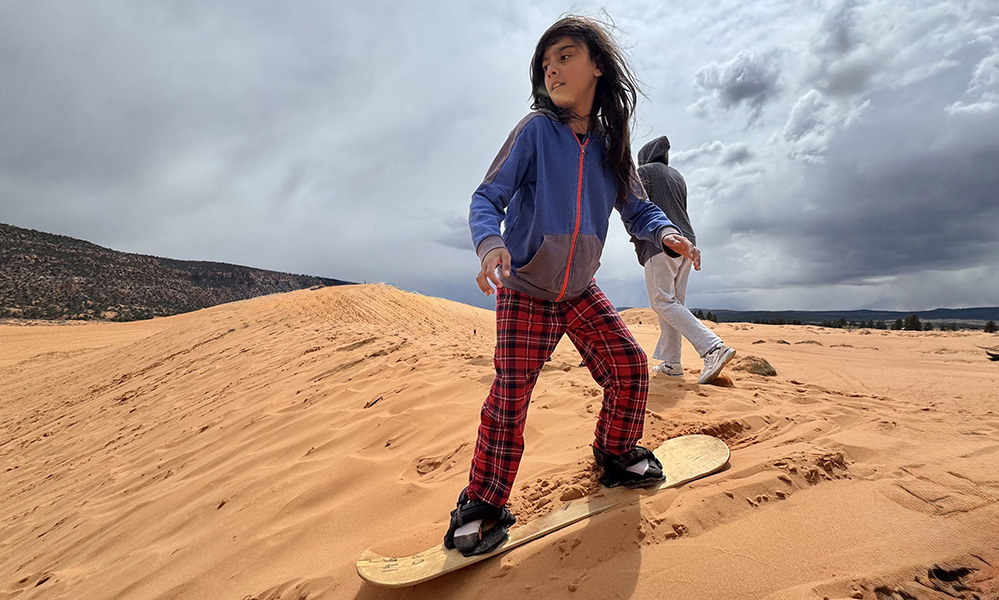
“My son wasn’t really supposed to make it to birth,” says Chandra. “And then he wasn’t supposed to make it to 5 years old. And here he is, and we are talking about his future and it was something I never let myself hope for or plan for.”
For the moment, Ethan is clearly flourishing. But he isn’t the only disabled child Chandra hopes and plans for. She is a pediatric home health nurse whose job is to attend school with a third grader with complex medical disabilities. The boy’s family gave her permission to talk about him in general terms but not to name him. Chandra’s family lives in Lehi, Utah. Her patient attends school in a different district.
An advocate for children with complex medical needs with the group Little Lobbyists Family Alliance, Chandra has infinite belief in both kids’ potential but fears about the mounting possibility they will lose the services that keep them in school. They’re thriving in part because they learn alongside nondisabled students. The public services that make this possible are intertwined. Remove any one element, and the boys’ prospects for an independent future start to look like a very high-stakes game of Jenga.
Children with disabilities are dependent on two laws: the Individuals with Disabilities in Education Act and Section 504 of the Americans with Disabilities Act. The former requires schools to develop legally binding individualized education programs, or IEPs, which guarantee them the right to learn, for all or as much of the school day as is possible, alongside nondisabled children.
Chandra’s presence in the classroom is a requirement in her patient’s IEP. She is careful to guard the boy’s medical privacy, saying only that her job is to keep him healthy while his teachers keep him learning.
“No one’s putting him away in an institution or putting him away in a place where he can’t see what his potential could be,” she says. “He sees it every day and he pushes himself to keep up with his peers. It’s incredible.”
Her work is paid for by Medicaid, which is administered by HHS and has been targeted for deep cuts by Trump. The president also announced that Kennedy would assume responsibility for special education, though his department has no infrastructure or expertise to do so.
Kennedy also has decried using medication to treat childhood depression and ADHD, suggesting children could instead be sent to “healing camps” or “wellness farms.” One of his first moves at HHS was to order the closure of the Administration for Community Living, the part of the department responsible for helping people with disabilities be as independent as possible.
If the dominoes that keep a child in school were to start falling, enforcement of their rights would in the past have been the purview of the U.S. Department of Education, where some 60% of complaints under recent review involve disability. The department’s staff has now been cut in half, and Trump has said he may move complaint investigations to the Justice Department.
Ethan survived to school age because of Medicaid and the Affordable Care Act, says Chandra. Unlike her patient, he does not have an IEP because currently his medical needs are well managed.
But Ethan also is autistic. The accommodations he needs to succeed academically and socially are not profound enough to merit an IEP, so he has a 504 plan — a less stringent document that spells out how his needs will be met under a portion of the Americans with Disabilities Act.
Last year, 17 Republican-led states sued the federal government seeking to have Section 504 declared unconstitutional. The ostensible motive was a Biden administration decision to recognize gender dysphoria as a potential disability. Yet the suit takes direct aim at 504, which it calls “coercive, untethered to the federal interest in disability and unfairly retroactive.”
The ADA also requires schools and other public facilities to be physically accessible to the disabled. Though poorly enforced, it mandates elevators, curb cuts and other accommodations. Separately, Trump has announced new rules that seem intended to roll back other ADA protections.
Research overwhelmingly shows that children with disabilities are more likely to be given rigorous instruction in regular classrooms than in special ed and to read and do math at or beyond their grade level. Fewer than 3% of students with IEPs in traditional district schools take Advanced Placement classes or dual-enrollment college-level courses.
Both Chandra’s son and her patient have a legal right to learn in regular classrooms. They’re getting good instruction, but she also sees other advantages. Their friends talk constantly about what they want to be when they grow up, for example. In a segregated classroom reserved for students with disabilities, there wouldn’t be so much excited chatter about the future.
Ethan’s aspirations include arachnologist, a Lego master builder and coder for Mojang Studios — the company that creates Minecraft games. Her patient, meanwhile, has a steady stream of new career goals. Recently, in his imagination he has tried on being a zookeeper, a sanitation worker and a car wash attendant.
“I see firsthand the difference it makes, and I am one person with one patient,” says Chandra. “I think about it playing out across the country. All the kids who stand to do so much. That’s what scares me.”
Mia Ives-Rublee
Mia Ives-Rublee started school in 1990, the year the Americans with Disabilities Act was signed. Among other changes, the law was intended to make school buildings accessible to wheelchair users like her, so they could learn alongside their nondisabled classmates. But when Ives-Rublee showed up for the first day of school, it was not to a classroom in her neighborhood elementary school, which was inaccessible.
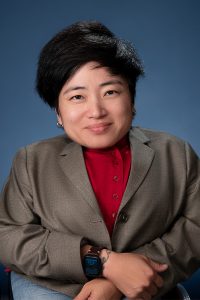
The family assumed that although it might not happen overnight, in the near future school buildings would be retrofitted to accommodate people with disabilities. Thirty years later, however, the U.S. Government Accountability Office would issue a report finding two-thirds of school systems had buildings that still were not safe or navigable.
District leaders told the GAO’s investigators that they planned to make changes, but were cash-strapped and chose to prioritize projects that kept buildings operational, such as new roofs or updates to heating systems.
Though disability has received less attention than race and gender, the anti-diversity, equity and inclusion edicts Trump has issued since his second inauguration have taken aim squarely at the ADA and other disability laws. Earlier this month, the administration attempted to roll back 11 rules governing how businesses must accommodate people with disabilities, which it deems burdensome.
It is unclear whether the federal government will continue to fight a lawsuit brought by 19 states that argue the education portion of the law is unconstitutional. Trump’s plan to move oversight of special education out of the U.S. Department of Education and into the U.S. Department of Health and Human Services has alarmed advocates, who charge that the change would spell an end to policies and programs that help disabled people live as independently as possible — and a return to the isolation that characterized the medical model of disability.
Thirty-five years ago, it seemed like students who use wheelchairs would soon be able to attend class with their peers. Ives-Rublee’s mother enrolled her in a magnet school, hoping that in a few years’ time more school buildings would be modified with elevators and other accommodations for students with physical disabilities. Five years later, when their local schools still hadn’t been remodeled, Ives-Rublee’s mother enrolled her in a middle school that fed into a high school that was already accessible.
In total, the family included three disabled kids. Ives-Rublee’s mother — a special education professional — “fought tooth and nail for me and my siblings,” she says. Even when a school building was able to accommodate a wheelchair user, there were battles for the kids to be able to participate in sports and after-school activities.
In 1996, Ives-Rublee’s uncle, who was on the U.S. Paralympic soccer team, invited the whole family to the opening ceremony at the Paralympic Games in Atlanta, and to his matches. She was shocked, she later told an interviewer for the online magazine Girl Talk HQ, to see so many disabled people testing their supposed physical limitations.
“It was the first time I got to see disability in a positive connotation,” she said. “The lighting of the Paralympic torch that year was a lighting of my soul. It lit a fire in me that has yet to go out. It pushes me to continue to push against the limitations people originally set and look for ways to continue to seek new goals.”
Ives-Rublee’s parents encouraged her to get involved in adaptive athletics. She eventually chose to enroll at the University of Illinois, which had a wheelchair track program, and went on to compete in track, swimming, basketball, fencing and adaptive crossfit, among other sports.
After earning a master’s in social work, she worked helping people with disabilities find jobs. Her clients would often come back, however, saying they needed a new position because they weren’t being accommodated. She decided to switch gears and find a job where she could influence policy.
Ives-Rublee is now the senior director of the Center for American Progress’ disability justice initiative, and she credits the successes that prepared her for her career not to an educational system that presumed she was leadership material, but to her mother.
“I know from the policy work that I do that there’s a huge number of disabled children who don’t finish high school, who don’t go to college and who do go to college but don’t graduate,” she says. “There’s a high correlation of independence — the ability to get jobs and live in community — based on whether you have a college degree.”
Beyond the possible rollback of the ADA, Ives-Rublee fears the path to adult self-determination is under assault on other fronts. In March, Kennedy announced he intended to close the Administration for Community Living, the HHS division that oversees programs that keep people with disabilities and older Americans in their homes.
Ives-Rublee is particularly concerned the Education Department’s Rehabilitation Services Administration may be dissolved. This agency oversees job training and other services intended to allow people with disabilities to live independently as possible.
Students with disabilities are legally entitled to a free and appropriate education until their 22nd birthday, with many staying in school for so-called transition services — a final phase of special education that is supposed to prepare young people for life after high school. If Trump succeeds in shuttering the agency, many advocates fear these programs could be transferred to the U.S. Department of Labor or another agency.
This, Ives-Rublee says, would take the emphasis off education: “Rehabilitation provides that bridge for students who are literally in free fall after receiving very structured [in-school] services. They’re told to figure it out; you’re on your own.”
Among other things, the rehabilitation office funds local agencies that help disabled individuals choose, train for and get jobs in their chosen careers. To get the grants, states have to add their own tax dollars. Rather than invest a share, states sometimes choose to forgo the federal support.
“That really, really concerns me — that we are already seeing this reluctance to put funding toward it,” says Ives Rublee. “States are just deciding to leave it on the table.”
The alternatives, she concludes, are terrifying to people with disabilities. Under the assumption that a student with an IEP will not achieve independence, schools often encourage families to seek legal guardianship. This robs many young adults of the ability to make their own decisions.
Some may end up in dangerous jobs typically filled by people perceived as lacking skills or in settings known as sheltered workshops, where they will be paid far less than minimum wage. Finally, in a push that could further endanger workers with disabilities and mark a return to an era of defaulting to institutionalized settings, some states are attempting to loosen labor protections for children and others.
Says Ives-Rublee: “We’re really seeing a significant slide back to the 1930s and ‘40s, where kids were working in mills getting killed by machinery.”
Stephen Toth
As unbelievable as it sounds, a child who is blind — a condition that is often diagnosed at the start of life — may be denied in-school assistance. It happened when Stephen Toth started school a quarter-century ago, and it still happens today. And with the return of a system focused squarely on children’s medical deficits, and not their potential, advocates fear that the rate at which students with clearly established needs will be denied specialized assistance in school will increase.
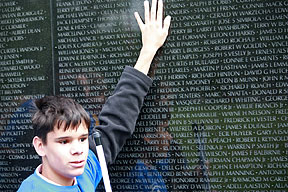
When Toth was of kindergarten age, his mother was told by school district leaders in New Orleans, where they lived, that there was no special education available. Period.
So she registered him, using his grandmother’s address, in a district an hour’s drive away. There, he was given the crudest of accommodations: hard copies of braille reading materials and a mechanical device called a Perkins Brailler.
Braille texts are made up of combinations of groups of six raised bumps, on thick raised paper, that represent different letters, numbers and symbols. Until the invention of the brailler in the late 1800s, each dot had to be punched by hand, using a stylus.
Essentially small typewriters that allow a person to tap out all the raised dots that make up a single character at once, the devices were a leap forward. Still, typing out even a single word was painfully slow, and Toth had a hard time writing fast enough to keep up with his classmates.
He was struggling through third grade when Hurricane Katrina forced his family to evacuate to Oregon for a few months. There, he was placed for the first time in a mainstream classroom and allowed to socialize with other kids.
His special education case manager loaned him a special keyboard, with the characters arrayed in a traditional QWERTY configuration. It was a revelation for both Toth — who could suddenly work almost as efficiently as his sighted peers — and his mother. Having realized that good technology existed, she raised hell when the family returned to New Orleans.
When Toth was in fourth grade, she threatened to sue the Orleans Parish School Board unless he was given functional technology. District leaders gave him two versions of a 20-year-old Braille ‘n’ Speak notetaker. It was, he says, akin to a Palm Pilot — an electronic device the size of a VHS tape that could hold bits of information such as dates and short notes.
There was no way for a user to get the device to make its contents available in braille. Toth could not see, using his fingers, what he was writing. Which really didn’t matter, since neither notetaker had a charger and he couldn’t even turn them on.
To young children with disabilities and their families, experiences like this can send a signal that school officials don’t really expect students to achieve, which easily becomes a self-fulfilling prophecy. Sent that message about their perceived potential, children with disabilities struggle to learn to advocate for themselves — a crucial step toward achieving independence.
In sixth grade, Toth got a laptop — a gift from an uncle that instantly made school easier. He was invited to be part of a National Federation of the Blind student delegation visiting Washington, D.C., to lobby Congress. He learned the power of telling his story, and set his sights on college.
Toth was in his last semester at the University of New Orleans, working toward a marketing degree, when a former teacher of his reached out. The educator had a student who needed to learn braille in Spanish. Could Toth, who has Spanish-speaking relatives, help?
As Toth worked with the student, he had an epiphany about his life’s work: He should use his marketing skills to teach children with disabilities how to market themselves. How to identify their aptitudes, present their vision for tapping those skills to others and ask for what they needed to make their goals reality.
Currently, he is a contract educator for a New Orleans network, Einstein Charter Schools. He teaches braille, technology and life skills.
“I primarily work with students on how to be more assured and more confident in their own skin, in their own body, in their own life, and understanding that how they live is not a detriment to them as a person,” he says. “Because sometimes that’s rough, especially if a student has just entered the world of requiring some accessibility.”
The earlier children can assert their needs, the better, he says: “By teaching these students when they’re young, when they’re fourth and fifth and sixth grade, it teaches them how to advocate for themselves when they might not have all the services that they need.”
Recently, Toth worked with a student whose experience harkened back to a time disability advocates fear a return to: when they had to jump hoops to get an educational need met. One of his students needed to prove their vision was impaired in order to get services included in their IEP. “I had to give testimony as an instructor who works with this particular student in order to get the IEP. It was literally a 2½-month ordeal,” Toth says.
He was of a mixed mind. Two decades after his mother began fighting for assistive technology for him, his student was having to justify needing accommodations. On the other hand, it was gratifying to be able to use his own experiences to help someone else: “Fighting for a student’s needs and actually seeing results of that is emotionally satisfying. It’s gratifying to know that you, just as your predecessors, are having an effect on real people.”
Now, Toth fears the changes on deck in Washington will mean returning to a day when a medical diagnosis is not necessarily followed by educational services: “That future looks like them being sheltered, not living life as full human beings.”
“By marketing yourself and advocating for what you need, you are a stronger individual,” he says — one who can have a positive impact on society. “Only you live your existence and you know, based on your disability, what is best for you. If you’re crazy enough to change the world, you will.”
Get stories like these delivered straight to your inbox. Sign up for The 74 Newsletter

;)
